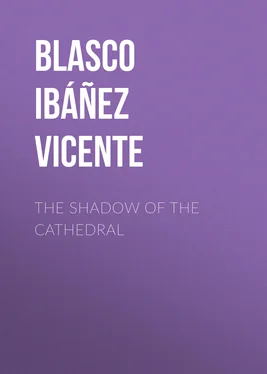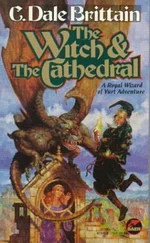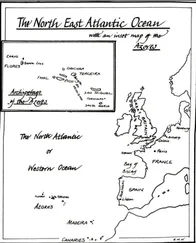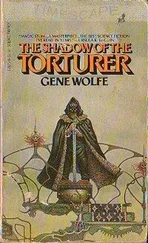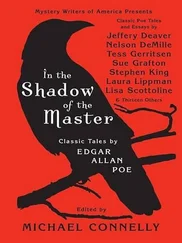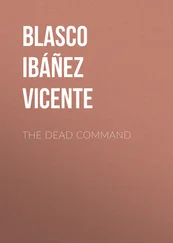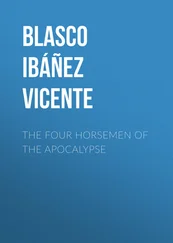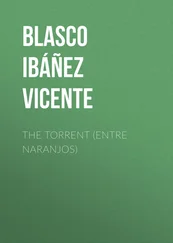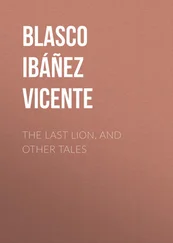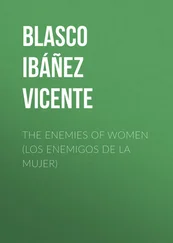Vicente Blasco Ibáñez - The Shadow of the Cathedral
Здесь есть возможность читать онлайн «Vicente Blasco Ibáñez - The Shadow of the Cathedral» — ознакомительный отрывок электронной книги совершенно бесплатно, а после прочтения отрывка купить полную версию. В некоторых случаях можно слушать аудио, скачать через торрент в формате fb2 и присутствует краткое содержание. Жанр: foreign_prose, foreign_antique, на английском языке. Описание произведения, (предисловие) а так же отзывы посетителей доступны на портале библиотеки ЛибКат.
- Название:The Shadow of the Cathedral
- Автор:
- Жанр:
- Год:неизвестен
- ISBN:нет данных
- Рейтинг книги:4 / 5. Голосов: 1
-
Избранное:Добавить в избранное
- Отзывы:
-
Ваша оценка:
- 80
- 1
- 2
- 3
- 4
- 5
The Shadow of the Cathedral: краткое содержание, описание и аннотация
Предлагаем к чтению аннотацию, описание, краткое содержание или предисловие (зависит от того, что написал сам автор книги «The Shadow of the Cathedral»). Если вы не нашли необходимую информацию о книге — напишите в комментариях, мы постараемся отыскать её.
The Shadow of the Cathedral — читать онлайн ознакомительный отрывок
Ниже представлен текст книги, разбитый по страницам. Система сохранения места последней прочитанной страницы, позволяет с удобством читать онлайн бесплатно книгу «The Shadow of the Cathedral», без необходимости каждый раз заново искать на чём Вы остановились. Поставьте закладку, и сможете в любой момент перейти на страницу, на которой закончили чтение.
Интервал:
Закладка:
All the churches in Toledo remained in the hands of the Christian Muzarabés 13 13 : Muzarabés—Christians living among the Moors and mixing with them; also an ancient form of service still continued in one chapel in Toledo and in one at Salamanca.
with the exception of the Cathedral, which was converted into the principal mosque.
The Catholic bishops were respected by the Moors, as were also the Hebrew rabbis; but the Church was poor, and the continual wars between the Saracens and the Christians, together with the reprisals which set a seal on the barbarities of the reconquest, made the continuance and life of worship extremely difficult.
Having arrived at this point Gabriel read the obscure names of Cixila, Elipando and Wistremiro. Saint Eulogio termed this last "the torch of the Holy Spirit, and the light of Spain"; but history is silent as to his deeds, and Saint Eulogio was martyred and killed by the Moors in Cordova on account of his excessive religious zeal. Benito, a Frenchman who succeeded to the chair, not to be behind his predecessors, made the Virgin send him down another chasuble to a church in his own country before he came to Toledo.
After these, came the interesting chronology of the warrior archbishops, warriors of coat-of-mail and two-edged sword, the conquerors who, leaving the choir to the meek and humble, mounted their war-horses and thought they were not serving God unless during the year they added sundry towns and pasture lands to the goods of the Church. They arrived in the eleventh century, with Alfonso VI., to the conquest of Toledo. The first were French monks from the famous Abbey of Cluny, sent by the Abbot Hugo to the convent of Sahagun, and they were the first to use the "don" as a sign of lordship. To the pious tolerance of the preceding bishops, accustomed to friendly intercourse with Arabs and Jews in the full liberty of the Muzarabé worship, succeeded the ferocious intolerance of the Christian conqueror. The Archbishop Don Bernardo was scarcely seated in the chair before he took advantage of the absence of Alfonso VI. to violate all his promises. The principal mosque had remained in the hands of the Moors by a solemn compact with the king, who, like all the monarchs of the reconquest, was tolerant in matters of religion. The archbishop, using his powerful influence over the mind of the queen, made her the accomplice of his plans, and one night, followed by clergy and workmen, he knocked down the doors of the mosque, cleansed it and purified it, and next morning when the Saracens came to pray towards the rising sun, they found it changed into a Catholic cathedral. The conquered, trusting in the word given by the conqueror, protested, scandalised, and that they did not rise was solely due to the influence of the Alfaqui Abu-Walid, who trusted that the king would fulfil his promises. In three days Alfonso VI. arrived in Toledo from the further end of Castille, ready to murder the archbishop and even his own wife for their share in this villainy that had compromised his word as a cavalier, but his fury was so great that even the Moors were moved, and the Alfaqui went out to meet him, begging him to condone the deed as it was accomplished, as the injured parties would agree to it, and in the name of the conquered he relieved him from keeping his word, because the possession of a building was not a sufficient reason for breaking the peace.
Gabriel admired as he read the prudence and moderation of the good Moor Abu-Walid; but with his enthusiasm as a seminarist he admired still more those proud, intolerant and warlike prelates, who trampled laws and people under foot for the greater glory of God.
The Archbishop Martin was Captain-General against the Moors in Andalusia, conquering towns, and he accompanied Alfonso VIII. to the battle of Alarcos. The famous prelate Don Rodrigo wrote the chronicle of Spain, filling it with miracles for the greater prosperity of the Church, and he practically made history, passing more time on his war-horse than on his throne in the choir. At the battle de las Navas he set so fine an example, throwing himself into the thick of the fight, that the king gave him twenty lordships as well as that of Talavera de la Reina. Afterwards, in the king's absence, he drove the Moors out of Quesada and Cazorla, taking possession of vast territories, which passed under his sway, with the name of the Adelantamiento. 14 14 : Adelantamiento —Advancement.
Don Sancho, son of Don Jaime of Aragon, and brother to the Queen of Castille, thought more of his title of "Chief Leader" than of his mitre of Toledo, and on the advance of the Moors went out to meet them in the martial field. He fought wherever the fighting was fiercest, and was finally killed by the Moslems, who cut off his hands and placed his head on a spear.
Don Gil de Albornoz, the famous cardinal, went to Italy, flying from Don Pedro the Cruel, and, like a great captain, reconquered all the territory of the Popes, who had taken refuge in Avignon. Don Gutierre III. went with Don Juan II. to fight against the Moors. Don Alfonso de Acuna fought in the civil war during the reign of Enrique IV.; and as a fitting end to this series of political and conquering prelates, rich and powerful as true princes, there arose the Cardinal Mendoza, who fought at the battle of Toro, and at the conquest of Granada, afterwards governing that kingdom; and Jimenez de Cisneros, who, finding no Moors left in the Peninsula to fight, crossed the sea and went to Oran, waving his cross and turning it into a weapon of war.
The seminarist admired these men, magnified by the mists of ancient history and the praises of the Church. For him they were the greatest men in the world after the Popes, and, indeed, often far superior to them. He was astonished that the Spaniards of the present times were so blind that they did not entrust their direction and government to the archbishops of Toledo, who in former centuries had performed such heroic deeds. The glory and advancement of the country was so intimately connected with their history, their dynasty was quite as great as that of the kings, and on more than one occasion they had saved these latter by their counsels and energy.
After these eagles came the birds of prey; after the prelates with their iron morions and their coats-of-mail came the rich and luxurious prelates, who cared for no other combats but those of the law courts, and were in perpetual litigation with towns, guilds, and private individuals in order to retain the possessions and the vast fortune accumulated by their predecessors.
Those who were generous like Tavera built palaces, and encouraged artists like El Greco, Berruguete and others, creating a Renaissance in Toledo, an echo from Italy. Those who were miserly, like Quiroga, reduced the expenses of the pompous church, to turn themselves into money-lenders to the kings, giving millions of ducats to those Austrian monarchs on whose dominions the sun never set, but who, nevertheless, found themselves obliged to beg almost as soon as their galleons returned from their voyages to America.
The Cathedral was the work of these priestly ecclesiastics; each one had done something in it which revealed his character. The rougher and more warlike its framework, that mountain of stone and wood which formed its skeleton; those who were more cultivated, elevated to the See in times of greater refinement, contributed the minutely-worked iron railings, the doors of lace-like stonework, the pictures, and the jewels which made its sacristy a veritable treasure house. The gestation of the giantess had lasted for three centuries; it seemed like those enormous prehistoric animals who slept so long in their mother's womb before seeing the light.
When its walls and pilasters first rose above the soil Gothic art was in its first epoch, and during the two and a half centuries that its building lasted architecture made great strides. Gabriel could follow this slow transformation with his mind's eye as he studied the building, discovering the various signs of its evolution.
Читать дальшеИнтервал:
Закладка:
Похожие книги на «The Shadow of the Cathedral»
Представляем Вашему вниманию похожие книги на «The Shadow of the Cathedral» списком для выбора. Мы отобрали схожую по названию и смыслу литературу в надежде предоставить читателям больше вариантов отыскать новые, интересные, ещё непрочитанные произведения.
Обсуждение, отзывы о книге «The Shadow of the Cathedral» и просто собственные мнения читателей. Оставьте ваши комментарии, напишите, что Вы думаете о произведении, его смысле или главных героях. Укажите что конкретно понравилось, а что нет, и почему Вы так считаете.
